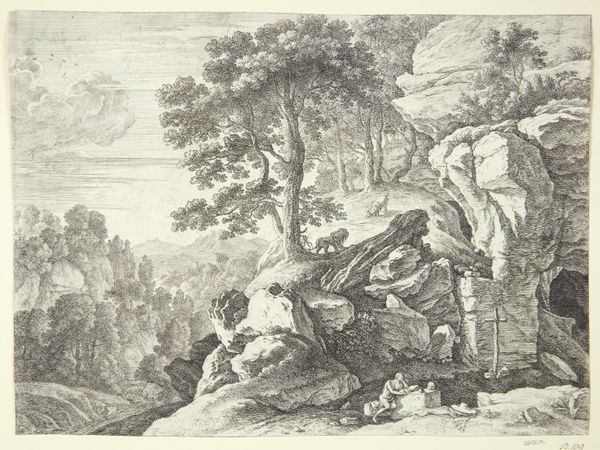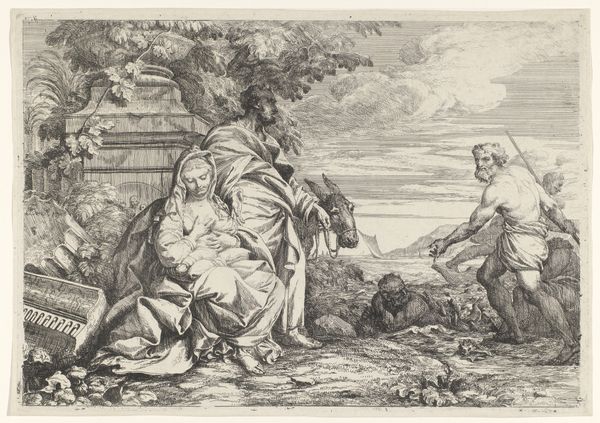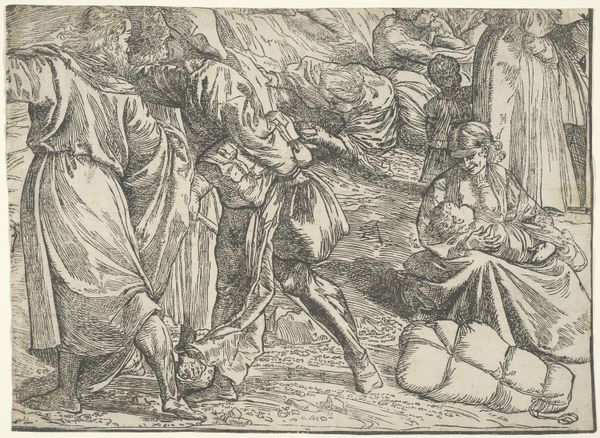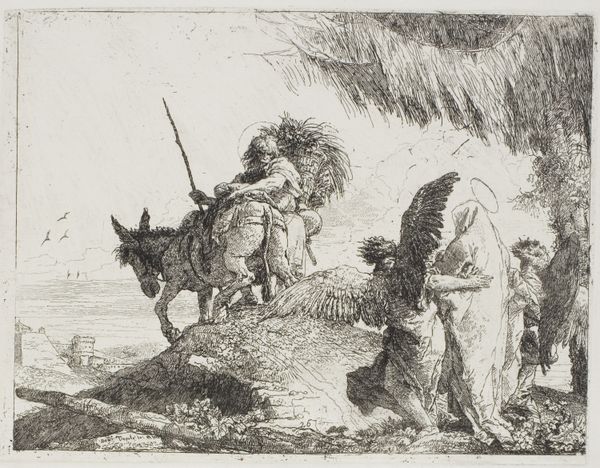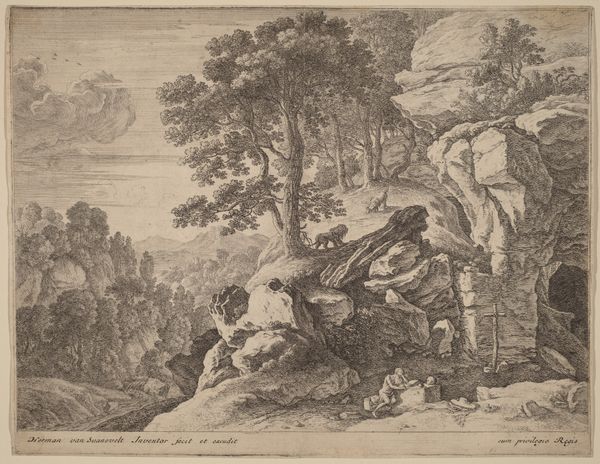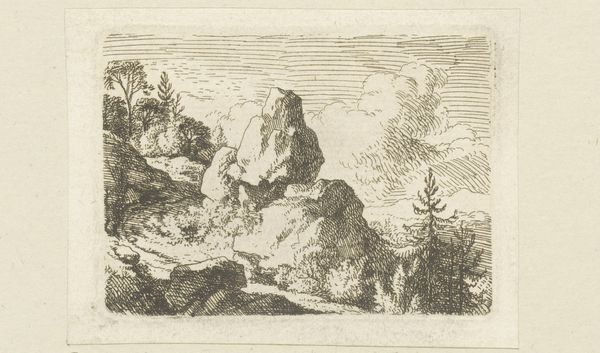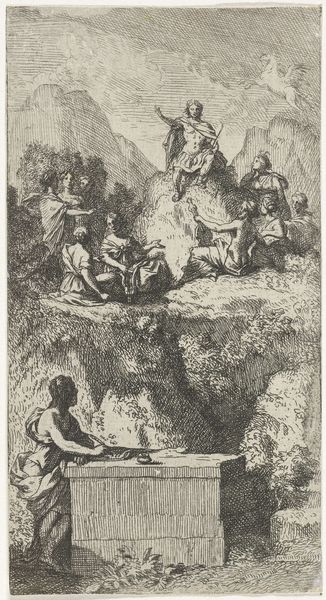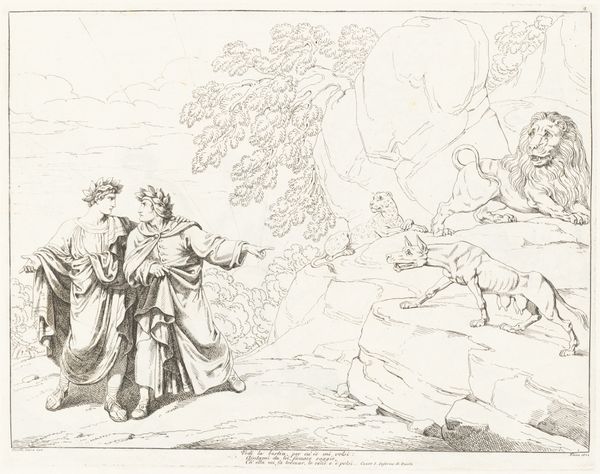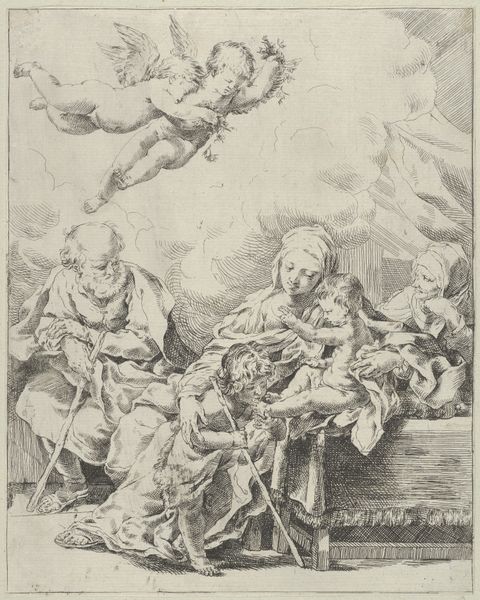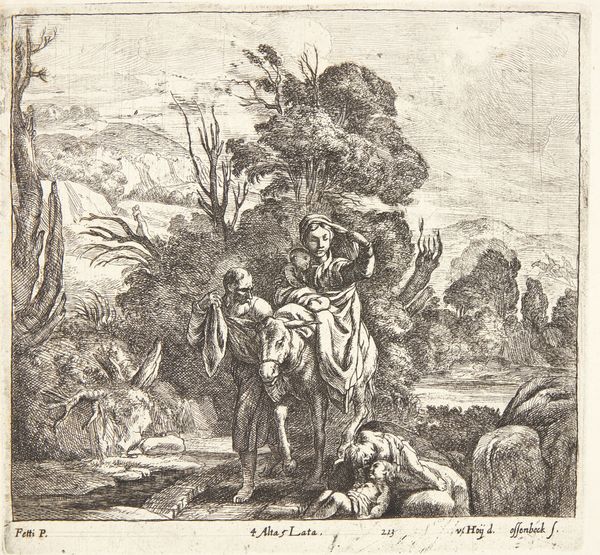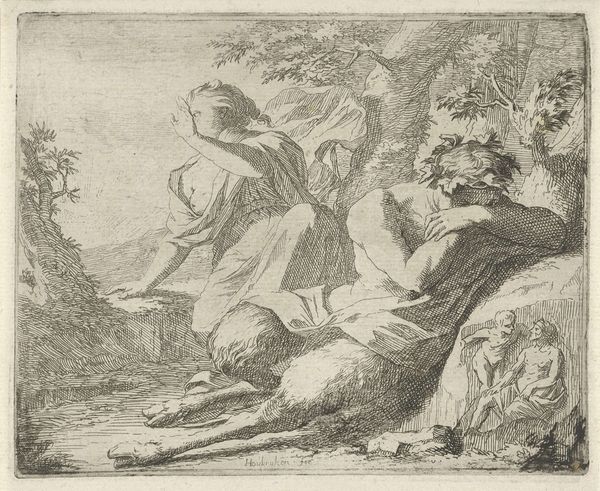
The Holy Family Walking Along a City Wall. On the left, a Shepherd with his Flock and God the Father, plate eight from The Flight into Egypt 1753
0:00
0:00
drawing, print, etching, paper
#
drawing
#
narrative-art
#
baroque
# print
#
etching
#
landscape
#
paper
#
pencil drawing
#
rococo
Dimensions: 188 × 248 mm
Copyright: Public Domain
Editor: Here we have Giovanni Domenico Tiepolo's "The Holy Family Walking Along a City Wall," an etching from 1753. It’s quite a busy image, with a lot of figures and textures crammed onto a relatively small paper. How do you interpret this work? Curator: It’s fascinating to consider this print as an object produced for a specific market. Etchings like these were often made to be sold and collected. Think about the labour involved: the artist creating the image, the workshop reproducing it, and then its circulation through merchants. How does understanding its place within a system of production and consumption change how we view the image itself? Editor: That's a really interesting point! It does make me think about the sheer number of prints that must have been made. The artist becomes a kind of manufacturer, almost. I hadn't really considered the practical, commercial aspects. Curator: Exactly! And notice the materials. Paper was becoming more readily available, fostering printmaking’s spread. Etching itself is relatively accessible process compared to other forms of printmaking. Could its democratic qualities influence how stories were shared through the artwork? Editor: Yes! It's not just a divine scene, it's an object that can be distributed and reproduced, almost like...sharing the story more widely through a material means. Considering Tiepolo as someone deeply embedded in this material process, it changes everything. Curator: Precisely. It urges us to rethink traditional distinctions of 'high' and 'low' art. These prints engaged with popular culture through materials and methods and served many social strata, didn't they? Editor: Definitely, this perspective on production really reframes how I appreciate it. Thank you for pointing that out. Curator: My pleasure. It's important to remember the social context in the materials, the artistic process.
Comments
No comments
Be the first to comment and join the conversation on the ultimate creative platform.
